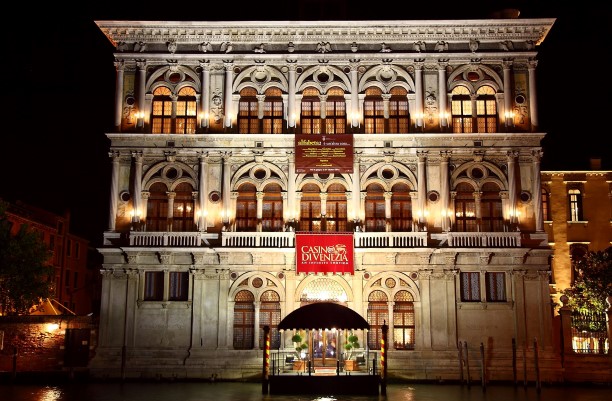Organized gambling has a long history. The first casino (although it wasn't called that at the time) was the Ridotto, a gambling house established by the government of Venice in 1638 with the goal to control gambling during the Carnival season. The idea of a gambling house as a meeting point for the rich and noble has persisted in Europe, with most major cities establishing at least one historic sites for their inhabitants and/or visitors to gamble at. As you might expect, some of these were grandiose and impressive buildings lushly decorated to increase the comfort of the patrons. Said patrons are often gamblers, yet these establishments often attract visitors not only through the services they offer but with their beauty, too. After all, in the age of the Internet, it's far easier to play Canadian online slots than to travel across the country for a hand of blackjack. Aside from being far more convenient, the All Slots also offers its visitors more diversity than most real life casinos, and benefits more useful than the cheap drinks and free food you can find in the latter. Besides, the All Slots is also far more accessible - after all, it's just a click or tap away 24 hours a day.
But let's get back to the real life and take a look at the most beautiful - and oldest - building that functions as a gambling establishment: Ca'Vendramin Calergi, the winter home of the Venice Casino. Built as a dwelling for a Venetian family of nobles in 1509, it has been decorated in a way that reflects the time's lush lifestyle, with an amazing frontage facing the Grand Canal, covered in columns and arched windows, and interiors to match it. The building has changed hands several times over the centuries, finally ending up among the many assets of the City Council of Venice in 1946. The decision to turn the building into the winter home of the Venice Casino was made in 1959, and the building has retained this function to this day.

Fusing wellness and entertainment is not a modern invention - it is a practice popular centuries ago. The Baden-Baden spa house (Kurhaus) and casino (spielbank) were built in 1824 to take care of both of its patrons' needs. Baden-Baden has been a spa town for ages, with even the Romans knowing of its waters' beneficial properties. It was not until the mid-1930s, though, that it achieved international fame. The famous resort has hosted nobles, nouveaux riches, artists, and adventurers - some of the most famous are legendary German actress Marlene Dietrich, and Russian author Fyodor Dostoyevsky, who's famous novel The Gambler was inspired by his visit to the Baden-Baden resort.
Last but not least, let us take a look at a more recent addition to the list - the Palais de la Méditerranée in the famous French tourist destination Nice. Palais de la Méditerranée was built by architects Charles and Marcel Dalmas for the American millionaire Frank Jay Gould in 1929. It is the perfect example of the 1930s architecture and lifestyle, combining a luxury hotel with a casino, a theater, a restaurant, and a cocktail bar. Although much of the original hotel was rebuilt in 1990, the original facade of the Palais de la Méditerranée was retained after being classified as a historical monument.